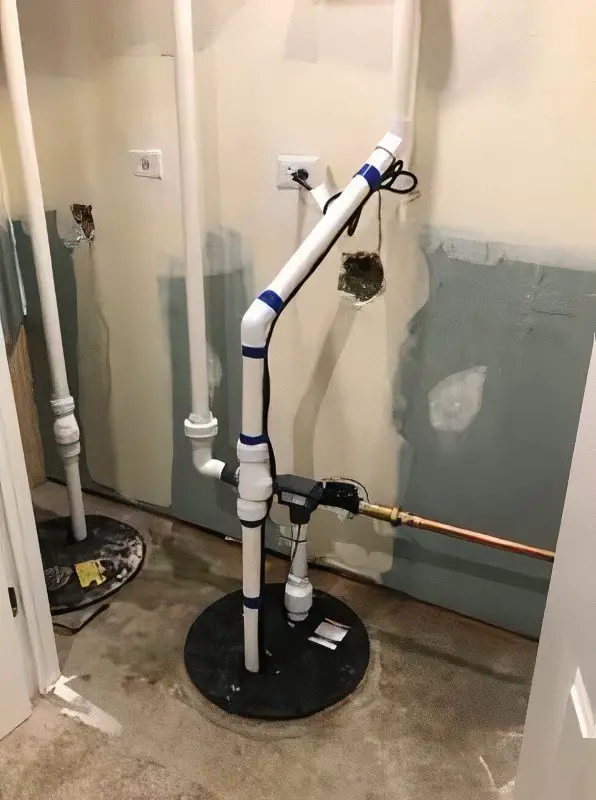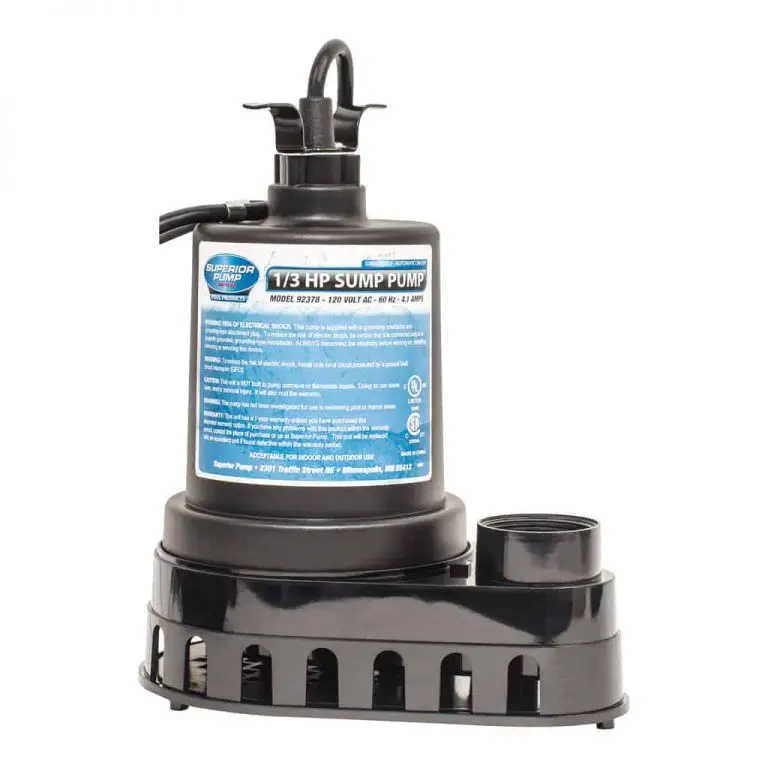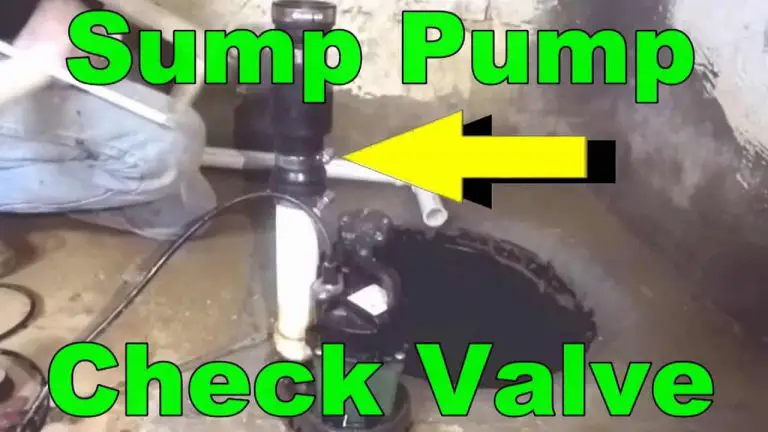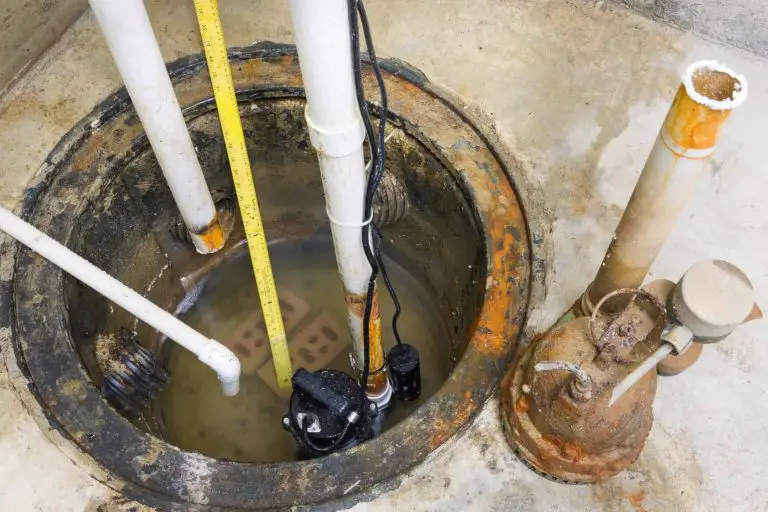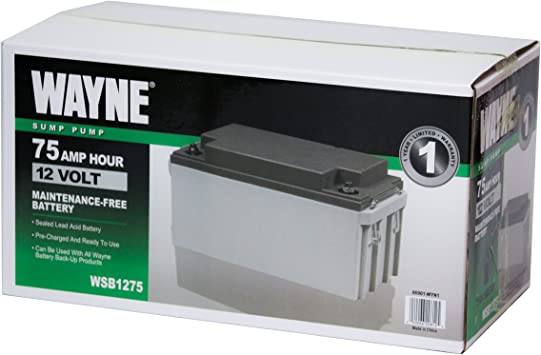Can a Car Inverter Run Sump Pump
If you’re a homeowner with a basement, you’re probably familiar with sump pumps and their importance in preventing flooding and water damage. But what if you need to use a sump pump in an emergency situation, and you don’t have access to a traditional power source? This is where car inverters come in.
In this article, we will delve into the world of car inverters and sump pumps and explore the compatibility between the two. We will provide a definitive definition of car inverters and sump pumps and explain their working principles. We will also discuss the factors that determine the compatibility between a car inverter and a sump pump and provide step-by-step instructions on how to run a sump pump with a car inverter.
Understanding Car Inverters
Car inverters are devices that convert the DC (direct current) power from a car’s battery into AC (alternating current) power, which is the type of power used by most household appliances and electronic devices. These inverters allow you to use your car’s battery to power devices that would normally require a standard AC power outlet.
Understanding how car inverters work and their different types is essential when considering whether they can effectively run a sump pump. Car inverters work on the principle of converting the 12-volt DC power from a car’s battery into 120-volt AC power.
This conversion is achieved through a series of electronic components, including transformers and transistors. The inverter takes the low voltage DC power and increases it to the higher voltage AC power needed to run household appliances.
There are two main types of car inverters: modified sine wave inverters and pure sine wave inverters. Modified sine wave inverters are more common and less expensive.
They produce a power output that approximates a sine wave but with some distortion. Pure sine wave inverters, on the other hand, produce a power output that is identical to the AC power supplied by the utility grid.
These inverters are more expensive but provide a cleaner and more stable power output. When running a sump pump with a car inverter, it is important to consider the attributes of the inverter to ensure compatibility and optimal performance.
One crucial attribute is the power rating of the inverter, which is measured in watts. The power rating determines the maximum amount of power the inverter can supply.
It is essential to choose an inverter with a power rating that matches or exceeds the power requirements of the sump pump. Another attribute to consider is the inverter’s surge capacity.
Sump pumps often require a higher power surge when starting up compared to their continuous power consumption. The inverter should have a surge capacity that can handle the initial power surge without causing any issues.
Additionally, the inverter should have built-in safety features such as overload protection, short circuit protection, and overheat protection. These features ensure the inverter shuts off automatically in case of any electrical faults or excessive heat, protecting both the inverter and the connected devices.
Understanding the working principle and different types of car inverters, as well as considering their power rating, surge capacity, and safety features, is crucial in determining whether a car inverter can effectively power a sump pump. By selecting the right inverter and ensuring compatibility, you can confidently run a sump pump using a car inverter.
Understanding Sump Pumps
A sump pump is a vital piece of equipment used to prevent flooding in basements or crawl spaces. It is designed to remove excess water that accumulates in a sump pit, typically located in the lowest part of a basement or crawl space.
Understanding how a sump pump works and the different types available is crucial when considering whether a car inverter can power it. Sump pumps operate on the principle of water displacement.
When the water level in the sump pit rises above a certain point, a float switch is triggered, activating the pump. The pump then removes the water by pumping it out through a discharge pipe and away from the building.
This continuous process helps keep the area dry and prevents water damage. There are two main types of sump pumps: submersible and pedestal.
Submersible sump pumps are designed to be placed directly in the sump pit, submerged in water. They are more expensive but tend to be quieter and more efficient.
On the other hand, pedestal sump pumps have a motor mounted above the sump pit, with only the impeller and float mechanism submerged. They are generally less expensive but louder and less efficient.
When using a car inverter to power a sump pump, it is important to consider the attributes of the sump pump itself. The power requirements of a sump pump can vary depending on its size and capacity.
It is crucial to check the power rating of the sump pump and ensure that the car inverter can provide enough power to meet its needs. Additionally, the startup power of a sump pump is higher than its running power.
This surge of power is required to overcome the initial resistance and start the pump. Some sump pumps have a higher surge power requirement, which may exceed the capabilities of certain car inverters.
It is essential to consider this factor when determining the compatibility between a car inverter and a sump pump. In terms of the power source, car inverters typically provide AC (alternating current) power, while sump pumps usually operate on AC power.
This compatibility makes it possible to use a car inverter to power a sump pump. However, it is crucial to ensure that the inverter’s power rating matches or exceeds the power requirements of the sump pump.
In the next section, we will explore the compatibility of car inverters and sump pumps in more detail, discussing the factors to consider and how to test their compatibility. Stay tuned to learn how to successfully run a sump pump with a car inverter.
Compatibility of Car Inverters and Sump Pumps
When considering the compatibility of car inverters and sump pumps, several factors need to be taken into account. It is crucial to ensure that the power output of the inverter matches the power requirements of the sump pump.
Mismatched power ratings can lead to inefficient operation or even damage to the equipment. One of the primary considerations is the power rating of the car inverter.
This rating determines the maximum amount of power that the inverter can provide. Sump pumps typically have different power requirements, depending on their size and capacity.
It is essential to choose an inverter that can supply enough power to meet the needs of the sump pump. To determine the power requirements of the sump pump, refer to the pump’s specifications or consult the manufacturer’s guidelines.
The power rating is usually expressed in watts or amps. Make sure to select an inverter with a power rating that matches or exceeds the sump pump’s requirements.
It is always better to choose an inverter with a slightly higher power rating to provide a buffer and avoid overloading the inverter. In addition to power ratings, it is also crucial to consider the type of inverter and its waveform.
Car inverters are available in two main types: modified sine wave and pure sine wave inverters. Modified sine wave inverters are more common and less expensive, but they may not be suitable for all types of equipment, including some sump pumps.
Pure sine wave inverters, on the other hand, provide a clean and stable power output similar to the electricity supplied by the grid, making them compatible with a wider range of devices, including sensitive electronics. Testing the compatibility of a car inverter and sump pump is essential before relying on them for critical operations.
Connect the inverter to a power source, such as a car battery, and then plug in and start the sump pump. Observe the pump’s performance and ensure that it operates smoothly without any issues.
Pay attention to any unusual noises, fluctuations in power, or signs of overheating. If the pump functions properly and the inverter can handle the load, they are compatible.
However, if any problems arise, such as the pump not starting or the inverter shutting down, it may indicate an incompatibility issue. It is worth noting that some sump pumps may have specific compatibility requirements or recommendations provided by the manufacturer.
Always refer to the pump’s documentation or consult the manufacturer to ensure compatibility and avoid any potential damage or safety hazards. In the next section, we will discuss the steps involved in running a sump pump with a car inverter, including the necessary preparations and the process of connecting and monitoring the operation.
Steps to Run a Sump Pump with a Car Inverter
Running a sump pump with a car inverter can be a practical solution in emergency situations or when access to traditional power sources is limited. However, it is important to follow the proper steps to ensure a safe and effective operation. In this section, we will outline the steps you need to take to run a sump pump with a car inverter.
- Preparing the car inverter and sump pump
Before you begin, make sure you have a car inverter that is capable of providing enough power for your sump pump. Check the power rating of both the inverter and the pump to ensure compatibility. Additionally, ensure that your car’s battery is fully charged and in good condition. - Connecting the inverter and sump pump
Start by locating your car’s battery and turning off the engine. Connect the positive (red) cable from the inverter to the positive terminal of the battery and the negative (black) cable to the negative terminal. Make sure the connections are secure and tight to avoid any loose connections or electrical issues. Next, connect the power cord of the sump pump to the AC output of the inverter. Double-check that all connections are secure and properly insulated to prevent any electrical hazards. - Starting and monitoring the sump pump operation
Once all the connections are in place, start your car’s engine. This will provide the necessary power to the inverter. Turn on the inverter and switch on the sump pump. Monitor the operation of the pump to ensure it is working correctly. Keep an eye on the inverter’s display or indicator lights to ensure it is functioning within its capacity.
It is important to note that running a sump pump with a car inverter should only be done for a limited time and as a temporary solution. Continuous operation for an extended period may drain your car’s battery and cause damage to the inverter or the pump.
Remember to periodically check the battery’s voltage to ensure it does not get too low. If the battery voltage drops significantly, it may be necessary to recharge the battery or consider an alternative power source.
In case of any issues or abnormalities during the operation, such as strange noises or overheating, immediately turn off the inverter and disconnect it from the battery. Assess the situation and address any problems before attempting to use the system again.
By following these steps, you can safely and effectively run a sump pump with a car inverter. However, it is essential to prioritize safety and to consider this as a temporary solution until a more reliable power source can be established.
Safety Considerations When Running a Sump Pump with a Car Inverter
Running a sump pump with a car inverter can be a convenient solution in emergency situations or when there is no access to traditional power sources. However, it is important to be aware of the potential safety hazards that may arise when using a car inverter and sump pump system.
Taking proper safety precautions and knowing how to handle emergencies is crucial to ensure the well-being of both individuals and the equipment involved. One of the potential hazards when using a car inverter and sump pump is the risk of electrical shock.
Both the car inverter and the sump pump deal with electrical currents, and any mishandling or faulty wiring can lead to electric shock. To minimize this risk, it is important to follow the manufacturer’s instructions for both the inverter and the sump pump.
Make sure to use the appropriate gauge and length of extension cords, as using cords that are too thin or too long can cause voltage drop and overheating. Another safety consideration is the risk of overheating.
Car inverters and sump pumps generate heat during operation, and if not properly ventilated, they can overheat and potentially cause a fire. It is essential to provide adequate ventilation for both the inverter and the sump pump by ensuring that they are placed in a well-ventilated area and not covered or obstructed by any objects.
Regularly check the temperature of the inverter and pump during operation to ensure they are within safe limits. In addition to electrical shock and overheating, there is also a risk of carbon monoxide poisoning when using a car inverter indoors or in poorly ventilated areas.
Car engines emit carbon monoxide, and if the inverter is connected to the car’s battery, it is important to ensure proper ventilation to prevent the buildup of this toxic gas. Always operate the car inverter and sump pump in well-ventilated areas or consider using a carbon monoxide detector to alert you if dangerous levels are detected.
To ensure the safety of individuals and the proper functioning of the equipment, it is crucial to take some safety precautions when running a sump pump with a car inverter. Here are a few important precautions to consider:
- Read and follow the manufacturer’s instructions for both the car inverter and the sump pump.
- Use the appropriate gauge and length of extension cords, and avoid overloading them.
- Regularly inspect the cords for any signs of damage or wear and replace them if necessary.
- Keep the inverter and sump pump in a well-ventilated area and ensure they are not obstructed.
- Monitor the temperature of the inverter and sump pump during operation and take appropriate action if overheating occurs.
- Avoid operating the car inverter and sump pump in wet or damp conditions to prevent electrical hazards.
- Never connect the inverter to the car’s battery while the engine is running to avoid the risk of carbon monoxide poisoning.
- Consider using a ground fault circuit interrupter (GFCI) for added protection against electrical shock.
In the event of an accident or malfunction, it is important to know the emergency procedures. If an electrical shock occurs, immediately disconnect the power source and seek medical attention if necessary.
In case of overheating or a fire, use a fire extinguisher suitable for electrical fires or call the fire department if the situation is beyond your control. If carbon monoxide poisoning is suspected, move to a well-ventilated area and seek medical help immediately.
By being aware of the potential hazards and taking the necessary safety precautions, running a sump pump with a car inverter can be a safe and effective solution. However, it is always recommended to consult with a professional or seek guidance from the manufacturer to ensure proper installation and operation of the equipment. Safety should always be the top priority when dealing with electrical devices and emergency situations.
Advantages and Disadvantages of Using a Car Inverter to Run a Sump Pump
Using a car inverter to run a sump pump can have its advantages and disadvantages. Let’s take a closer look at both sides of the coin. Advantages:
- Portability: One of the major advantages of using a car inverter is its portability. You can easily transport the inverter and sump pump to any location where a power source is not readily available. This is especially useful in situations such as camping trips, outdoor events, or during power outages.
- Cost-effective: Compared to purchasing a dedicated generator or installing a backup power system, using a car inverter can be a more cost-effective solution. Car inverters are relatively affordable and can provide sufficient power to run a sump pump without the need for additional equipment.
- Versatility: Car inverters can be used for more than just running a sump pump. They can also power other electronic devices such as laptops, smartphones, or even small appliances. This makes them a versatile power source that can come in handy in various situations.
Disadvantages:
- Limited power output: Car inverters are designed to convert the DC power from a car battery into AC power. However, they have a limited power output compared to dedicated generators. This means that not all sump pumps may be compatible with a car inverter, especially if they have a high power rating. It is important to check the power requirements of your sump pump before using a car inverter.
- Battery drain: Running a sump pump on a car inverter can drain the car battery quickly, especially if the pump operates for an extended period. This can be a concern, especially if you are relying on your car for transportation. It is important to monitor the battery level and take necessary precautions to avoid a dead battery.
- Noise and fumes: While car inverters are generally quieter compared to traditional generators, they can still produce some noise. Additionally, if you are operating the sump pump in an enclosed space, such as a basement, the fumes from the car engine can pose a risk. It is important to ensure proper ventilation when using a car inverter indoors.
Comparison with other power sources: When comparing a car inverter with other power sources for sump pumps, it is important to consider factors such as reliability, convenience, and cost. Dedicated generators can provide a higher power output and are typically more reliable, but they can be more expensive and require regular maintenance.
On the other hand, using a car inverter may be more convenient and cost-effective for occasional use or in situations where a dedicated generator is not feasible. Factors to consider: When choosing between a car inverter and other power sources, consider the following factors:
- Power requirements: Ensure that the power output of the car inverter is sufficient to run your sump pump effectively. Check the power rating of your sump pump and compare it with the power output of the inverter.
- Duration of operation: If you anticipate running the sump pump for an extended period, consider the battery life of your car and the potential impact on its performance.
- Convenience: Evaluate the ease of setup and operation. Consider factors such as noise, fumes, and portability when making your decision.
Conclusion
Using a car inverter to run a sump pump can be a convenient and cost-effective solution in certain situations. However, it is important to consider the limitations of car inverters, such as limited power output and battery drain.
Assess your specific needs and circumstances to determine if a car inverter is the right choice for you. Don’t forget to share your experiences or ask questions in the comments below!

